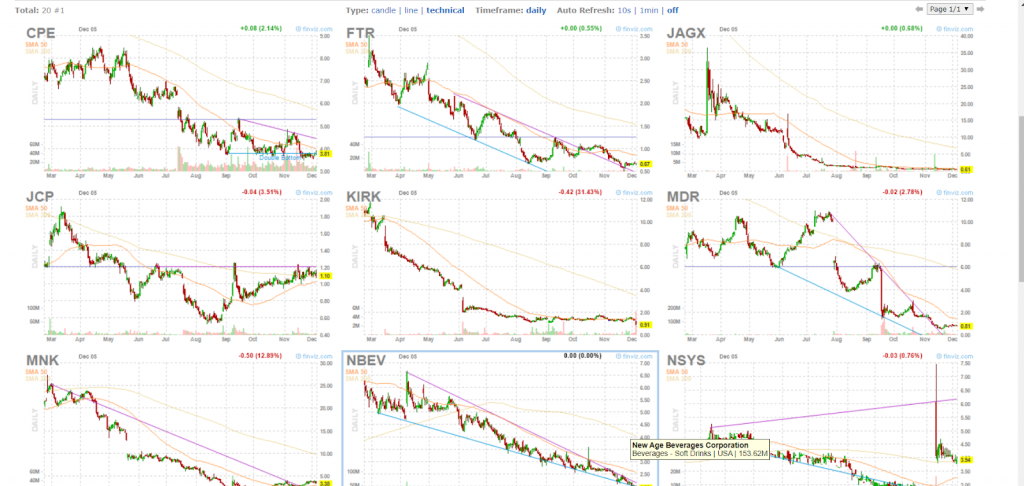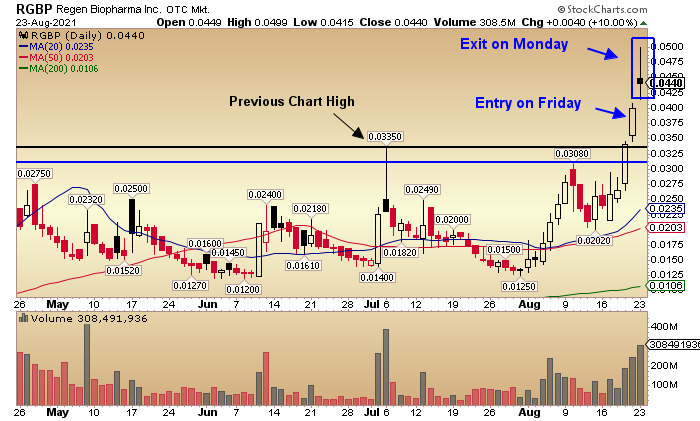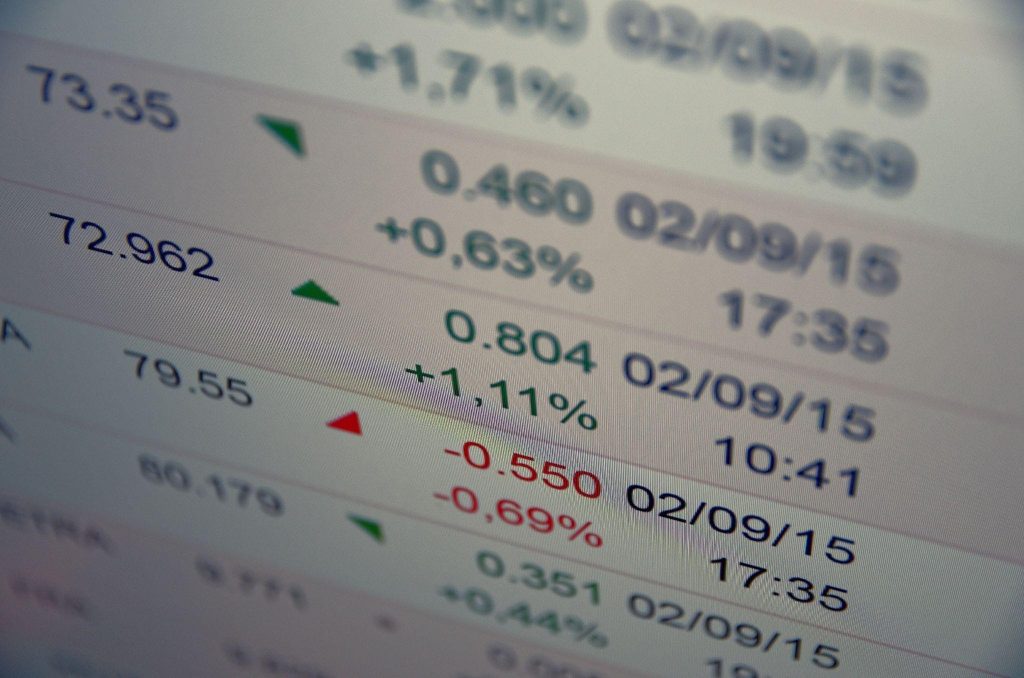How many times have you come into a trading day without preparing ahead of time?
To be fair… I’ve done this too many times to count. That is, before I realized the importance of being prepared.
Now I make it a daily habit to be prepared, and I find that by creating a watchlist the night before gives me a huge advantage.
And it’s not actually that hard to put together a watchlist yourself.
In fact, it’s so easy to do, I am going to quickly show you how to create one, along with how to use it…
Watchlists 101
A stock watchlist is exactly what it sounds like. A list of stocks that you are watching for potential trade setups.
For that reason, you don’t want a list full of a bunch of random stocks. You want it full of stocks that are ripe for trading.
And in my case that means stocks that could possibly present good trade setups the very next day.
With thousands of stocks, there are simply too many to keep track of, way too many. So what will you do in the morning if you are starting from scratch?
Most likely you’ll end up overwhelmed and anxious and pressured to find something to trade as quickly as possible, creating some forced trades… and inevitably missing some great ones.
Top traders generally have a plan going into the day and a watchlist is at the root of that plan.
It’s my way of getting a head start on the trading day.
How to Create a Watchlist
I know what I am looking for to make a trade. So it’s easy to put together a watchlist. In fact, it only takes me a few minutes each night.
The biggest part of my watchlist will come from my criteria scan. Knowing the criteria for my trades, I am able to run a screener that pulls up matching stocks in a matter of seconds.
Some of the things I scan for:
- High percentage movers – this is a big one in penny stocks
- Higher than average volume – tells me there’s interest
- Breakouts – One of my favorite trades is the breakout, so I will be watching for stocks that just broke above consolidation, a previous high, or are trading close to those levels
- Chart patterns – I use a number of chart patterns in my trading setups. When creating a watchlist, it is good to keep an eye on stocks that have formed or are forming those patterns.
For more insight on using scans, check out my post about scanning for trade setups.
After entering my criteria, the screener will come back with a list of stocks matching my inputs.
From there, I just need to narrow it down to the stocks that are best setup for trading right now.
And that’s as easy as looking at charts… sounds time-consuming, but it’s not. With my scan completed, I just scroll through the list looking for my favorite patterns.
Below is an example of my scan results. There are only 20 stocks on the scan and as you can see there are 9 charts on one screen and a scroll bar on the right.
So it really is as easy as just scrolling through the charts.

With that, I have the base for my watchlist.
But I don’t want to miss anything, so I check a few more places before finalizing my list.
- Stocks in play the day before – I just finished trading… that alone should produce at least one good candidate to watch tomorrow.
- Stocks from a recent watchlist to look for a new setup.
- Stocks I trade well… or had recent good trades in is another good place I look.
- News – this is a good one to potentially find catalysts for the next day… I don’t spend much time on this myself as I believe the charts will tell the story… for example- if a catalyst has legs, it will be a top percentage mover, show high volume and break out… all things I look for in my scan.
Now it’s time to make the list.
This is key… Don’t just write down the symbols. What happens in the heat of the moment when you pull up the stock and it’s moving, but all you have is a symbol on a piece of paper?
View the watchlist as your preliminary trade plan, and treat it accordingly.
Add important price levels, chart patterns, where a breakout would occur, where the next resistance is at, where support is etc…
What do you need to see in order to make a trade?
Having a watchlist is so critical that I make one every day…and use it.
Putting It To Use
First off, keep it on your screen where you are always aware of the stocks. Depending on your broker, there are all sorts of boardviews and ticker boards etc.
Just enter all of the watchlist stocks into one window so you can see the price and changes all in one place. And with a mental note on price levels, you can pretty much know if it’s getting to an area of interest or not, just with a glance.
Second… Set Alerts!
Something as simple as an alert can save you from missing a trade while you’re focused on another stock.
… and save everyone at your next happy hour from hearing the story of how you missed the perfect trade.
And guess what? They won’t believe you anyway… so just set the alert.
This should go without saying…but use your watchlist to make trades according to your plan.
You spent the time to find the right stocks to watch. You created a plan for each of those stocks.
Now show the patience to wait for the right setup. Only trade the stocks that actually set up according to your plan.
There will be days where none of them do and days where you have too many setups to take them all… but either way, with the watchlist we are always ready.
By using a watchlist, I am able to find setups in stocks like RGBP. After breaking out of an ascending triangle pattern, I added it to my watchlist.
And when the stock traded through the previous chart high last Friday, I bought it…looking for follow-through on Monday.

My watchlist helps me keep track of the stocks I like. I have the list in front of me knowing it could give me a trade, so my eye is on it.
And most importantly I have a plan for each one. I know what levels I like and what I want to see. So when it happens, I’m ready.
By scanning for stocks matching my trade parameters and adding them to a watchlist for the next day, I come into the morning prepared.







2 Comments
well presented and very useful,
Thanks
This is a great! Everyone should read it!